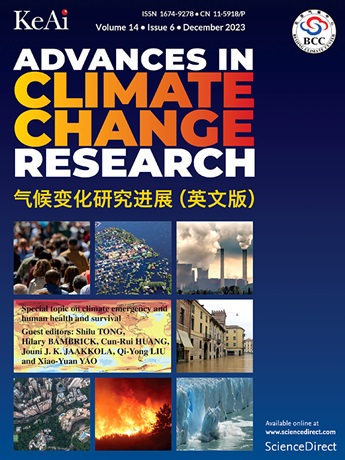印度尼西亚可持续电力系统转型的技术途径和社会经济影响综合评估
IF 5.2
1区 地球科学
Q1 ENVIRONMENTAL SCIENCES
引用次数: 0
摘要
由于发展中国家和煤炭生产国各自的特点,能源转型对发展中国家和煤炭生产国具有独特而深刻的社会经济影响。必须考虑到包括技术途径、投资、增值、就业和不平等在内的总体发展背景和挑战。以印度尼西亚为例,作为世界上最大的产煤国之一,其群岛性质,岛屿地形多样,社会文化多样性,人口众多,确实需要综合考虑上述各方面的综合能源转型研究,这是目前尚缺乏的。因此,本研究采用综合MARKAL-EFOM系统(TIMES)对印度尼西亚的技术变革和社会经济学对权力转移路径的影响进行了综合评估,并使用宫泽投入产出模型(MIOM)对其社会经济学含义进行了评估。采用了四种情景,即照常营业(BAU)、100%可再生能源(100% re)、《巴黎协定》1.5°C不淘汰煤炭(PA1.5)和有煤炭淘汰(PA1.5 po)。结果表明,到2060年,不应用碳捕获和储存(CCS)的100%可再生能源产生了极端的电力灵活性,这需要充足的能量储存,但无法实现净零。为了满足1.5°C的碳预算,PA1.5和PA1.5 po需要大量的可再生能源部署,特别是在公用事业规模的太阳能光伏、储能和低碳技术方面。这两种场景的总装机容量均有显著增长,是BAU场景的3.37 ~ 3.83倍。从2035年到2050年达到顶峰,PA1.5PO在先进天然气发电中作为桥梁燃料的作用越来越大。与BAU相比,PA场景需要更高的装机容量,对应的总投资成本在2060年几乎是2.5倍。MIOM的研究结果表明,与BAU相比,这些情景对家庭收入和就业的影响更大。然而,直到2045年,对增值(VA)的影响才会超过BAU,特别是在PA1.5PO场景中。从长远来看,PA1.5PO产生最高的附加价值和家庭收入,而100%可再生能源方案在电力部门具有最高的就业和最高的附加价值。相比之下,与传统能源供应链相关的非能源部门可能面临挑战。然而,PA1.5PO可以更好地减轻不良反应。关键发现可以为政策制定者更好地理解转型路径及其社会经济影响提供见解,以确保向碳中和经济的公平转型。本文章由计算机程序翻译,如有差异,请以英文原文为准。
An integrated assessment of technological pathways and socioeconomic impacts for sustainable power system transition in Indonesia
The energy transition has unique and profound socioeconomic impacts for the developing and coal-producing countries, due to the distinctive country's characteristics. The overall development context and challenges comprising technological pathways, investment, value added, employment and inequality must be considered. For the case of Indonesia, as one of the world's largest coal-producing, the archipelagic nature with various island topography, sociocultural diversity as well as very high population really needs a comprehensive energy transition research considering the above aspects, which is so far still lacking. Therefore, this current study presents an integrated assessment of technological change and socioeconomics impact for power transition pathways in Indonesia using the Integrated MARKAL-EFOM System (TIMES) and their socioeconomics implications using the Miyazawa Input–Output Model (MIOM). Four scenarios were applied namely business-as-usual (BAU), 100% renewable energy (100%RE), Paris Agreement 1.5 °C without coal phase-out (PA1.5), and that of with coal phase-out (PA1.5PO). The results show that by 2060, 100%RE without applying carbon capture and storage (CCS) creates an extreme power flexibility which requires ample energy storage but does not attain net-zero. To meet the 1.5 °C carbon budget, PA1.5 and PA1.5PO require substantial renewable energy deployment, particularly in utility-scale solar PV, energy storage, and low-carbon technologies. These two scenarios exhibit a notable increase in total installed capacity, ranging 3.37–3.83 times higher than the BAU scenario. PA1.5PO, plays an increasing role natural gas as bridge fuel in advanced gas power from 2035 to its peak in 2050. PA scenarios require a higher installed capacity compared to BAU, corresponding to a substantial total investment cost of almost 2.5 times in 2060. The MIOM results show that these scenarios have a stronger impact on household income and employment compared to BAU. However, the impact on value added (VA) only surpasses BAU until 2045, specifically in the PA1.5PO scenario. In the long term, PA1.5PO generates the highest value added and household income, whereas 100%RE scenario has the highest employment and the highest value added in the electricity sector. In contrast, non-energy sectors related to conventional energy supply chains may face challenges. However, PA1.5PO can better mitigate adverse effects. The key findings could provide an insight for policymakers better understand transition pathway and its socioeconomic impacts to ensure a fair transition towards a carbon-neutral economy.
求助全文
通过发布文献求助,成功后即可免费获取论文全文。
去求助
来源期刊

Advances in Climate Change Research
Earth and Planetary Sciences-Atmospheric Science
CiteScore
9.80
自引率
4.10%
发文量
424
审稿时长
107 days
期刊介绍:
Advances in Climate Change Research publishes scientific research and analyses on climate change and the interactions of climate change with society. This journal encompasses basic science and economic, social, and policy research, including studies on mitigation and adaptation to climate change.
Advances in Climate Change Research attempts to promote research in climate change and provide an impetus for the application of research achievements in numerous aspects, such as socioeconomic sustainable development, responses to the adaptation and mitigation of climate change, diplomatic negotiations of climate and environment policies, and the protection and exploitation of natural resources.
 求助内容:
求助内容: 应助结果提醒方式:
应助结果提醒方式:


